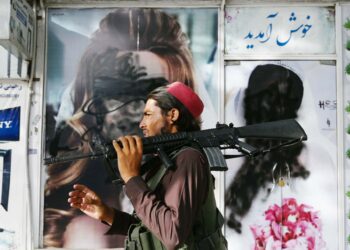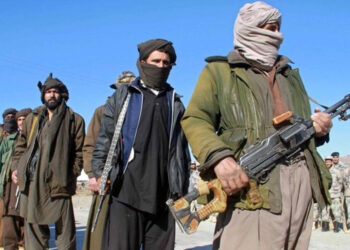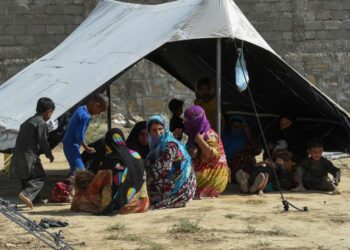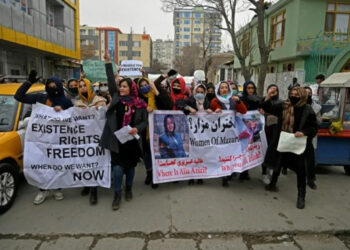KABUL, Afghanistan – One of the most cherished accomplishments of the West-backed government in Kabul has been the improved enrollment of girls in schools across Afghanistan, which took place against the backdrop of the Taliban’s attempts to ban education for girls altogether. Now, this achievement is under serious threat.
In its latest report, the Human Rights Watch said despite bold promises by the government, the stated goal of getting all Afghan girls into school is far from being reached. The report highlighted that the proportion of female students is now dropping across the country. It underlined that at present, 3.5 million children are out of school, and 85 percent of them are girls.
The advocacy group has named growing insecurity, poverty, and displacement as the main factors contributing to dropouts and falling rates of enrolment particularly among girls in schools across Afghanistan.
Enrollment of girls in schools across Afghanistan is under serious threat https://t.co/i5LIodY2GX pic.twitter.com/RmIErsNoKL
— The Globe Post (@TGlobePost) October 28, 2017
The rise of militants affiliated with Islamic State in the country’s north, which had been long considered a relatively safe area compared to the rest of the country that was marred by the Taliban insurgency, has added to the woes.
Militants in Afghanistan, who also include individuals from the Central Asia, Pakistan, Chechnya, and Arab countries, publically oppose girls’ education not only through their propaganda statements but through daring moves on the grounds as well.
The northern Afghan province of Jauzjan that borders Turkmenistan has been hard-hit by the militias. Abdulhai Yasen, the provincial director of education, told The Globe Post that the militants have forcefully closed 47 schools in the province’s Darzab district. Additional 28 schools have been shut down in the Qoshtapa district.
“Thirty-one of these schools are for girls, and 44 are for boys. With the help of local elders, we are trying to re-open these schools”, he said.
Official statistics from Jauzjan area says more than 26,000 boys and girls were enrolled in these schools.
The same situation transpired in Helmand, Kandahar, Paktika, Nuristan, Badakhshan, Kunar, Zabul, Ghazni and other provinces.
The HRW report said only 37 percent of adolescent girls and 66 percent of teenage boys in Afghanistan are literate. In half of the country’s 34 provinces, fewer than 20 percent of teachers are female, a major barrier for many girls whose families would not want their female child to be taught by a man, especially as they become teenagers.
About 40 percent of schools in Afghanistan have no buildings, and many lack boundary walls, water, and toilets, according to the HRW report. These circumstances disproportionately affect girls, who are often kept home due to discriminatory views that do not value or permit their education.
A third of Afghan girls marry before the age of 18, and once engaged or married, many of them are compelled to drop out of school.
Last month, the country’s Ministry of Education unveiled National Educational Strategic Plan III that has received a hefty financial support of $3 million. Announcing this new strategy, Mohammad Ibrahim Shinwari, the deputy minister for general education, stated that with the implementation of this strategy, 2.4 million children would be enrolled in schools. The plan would also allow to print new books, build thousands of classes, and provide technical training for teachers.
The ministry has also vowed to increase the number of educators and ultimately grow the number of students across the country to 12 million within five years.
Analysts, however, believe fundamental reforms are needed within the government to address the external challenges faced by the education sector. Siddiq Patman, an Afghan academic, told The Globe Post the ministry of education has not been immune to the general politicization of the public sector.
“Even high-level technical appointments are made based on political affiliation,” he said.
Liesl Gerntholtz, HRW women’s rights division director, has urged the Kabul government to renew focus on girls’ education and ensure all of them have a school to attend. Lack of response would put all achievements in this sector at risk, she noted.
Ms. Gerntholtz has called for the integration of community-based schools into the government education system. With sustainable funding and quality controls, they would serve as ‘a lifeline’ for many girls in Afghanistan who are otherwise likely to remain deprived of the fundamental right for education.
According to international standards established by UNESCO, the government should spend at least 15 to 20 percent of the total national budget, and 4 to 6 percent of GDP on education. The United Nations has urged least developed countries, which include Afghanistan, to reach or exceed the upper end of these benchmarks. In 2016, 13 percent of Afghanistan’s public expenditure, and 4 percent of its GDP were spent on education.





















